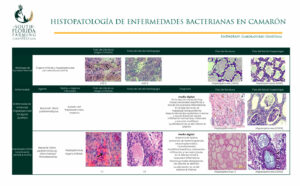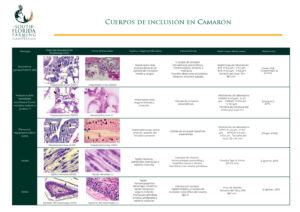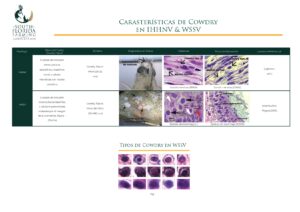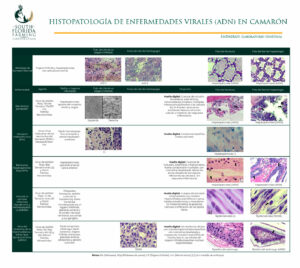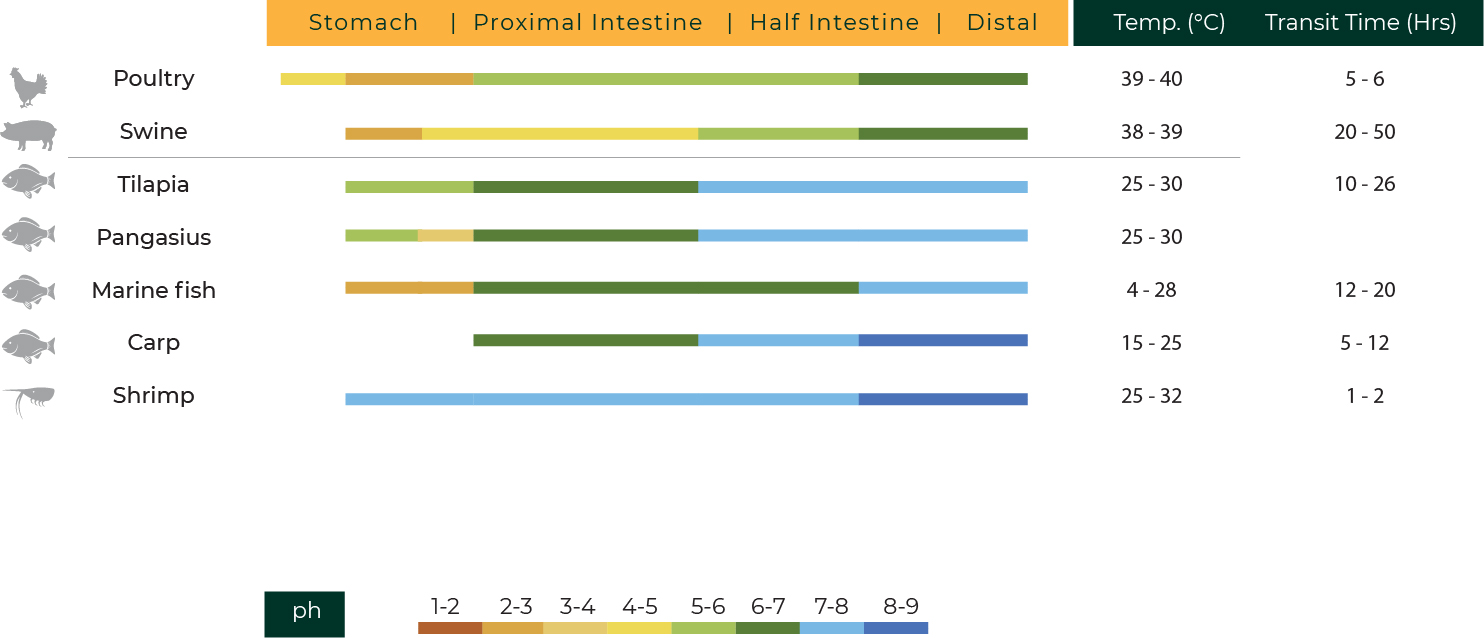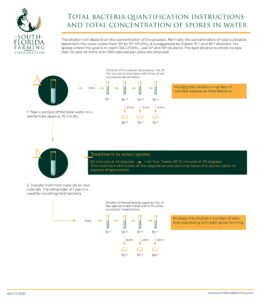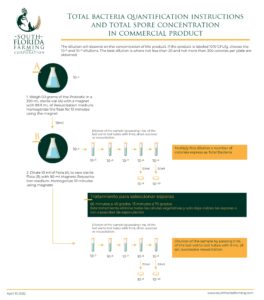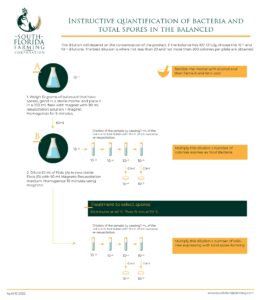NUTRITIONAL SYSTEM
- Shrimp
- Fish
- Poultry
- Swine
- Agriculture
HOW THE NUTRITIONAL SYSTEM WORKS
SHRIMP
The digestive system of peneid shrimp is divided into 3 main parts, the fore, middle, and hind intestine. Basically, the former is made up of the esophagus and stomach. The hepatopancreas and midgut, which are nearly straight and end in the anus. The stomach is made up of two chambers, the anterior and posterior chambers of the stomach, ASC and PSC respectively. This serves as a selective filter that excludes large particles from partially digested food, but allows smaller particles and soluble materials to enter the hepatopancreas ducts leading to the hepatopancreas, where further digestion and absorption of nutrients take place.
EFFECT OF FUNCTIONAL INGREDIENTS
HOW THE NUTRITIONAL SYSTEM WORKS
FISH
The structural components of a fish’s digestive system include the mouth, teeth and gills, esophagus, stomach, pylorus, pyloric cecum, pancreatic tissue, liver, gallbladder, intestine, and anus. The esophagus, which is lubricated by mucus, leads to the stomach. The stomach of omnivorous and planktivorous fish, if present, is small because a more or less constant flow of small food particles can flow directly into the intestine. In fish, the pancreas is usually diffuse, not a discrete body. As in all vertebrates, the pancreas has two digestive functions.
EFFECT OF FUNCTIONAL INGREDIENTS
Select the effect point
HOW THE NUTRITIONAL SYSTEM WORKS
POULTRY
The organs of the digestive system of birds begin with the beak/mouth, which has shapes and adaptations according to their diet. There are more than 12 different types and form is important in function. In addition, your system includes salivary glands, esophagus, pharynx, liver, buche, stomach, proventricle, gizzard, small and large intestine, mint, and cloaca.
The functions of the digestive system begin when food is ingested by the beak. The saliva found inside the beak contains digestive enzymes such as amylase that serve to initiate the process of digestion of food. Once the food is ingested, it begins to move through the esophagus in the direction of the crop (the place where excess food is stored so that the bird can digest it slowly). Subsequently, the food passes to the proventricular area (this is the first part of the stomach, where it tends to soften with gastric acid, mucus, and other digestive juices), followed by the second part of the stomach, the gizzard, which crushes the food into smaller pieces. Once the food is sufficiently decomposed, it is transferred to the small intestine, where the liver and pancreas proceed to help with the absorption of nutrients. It then passes into the large intestine and is then eliminated.
EFFECT OF FUNCTIONAL INGREDIENTS
Select the effect point
TYPE OF BACTERIA AND CONCENTRATION IN EACH SECTION OR ORGAN OF POULTRY
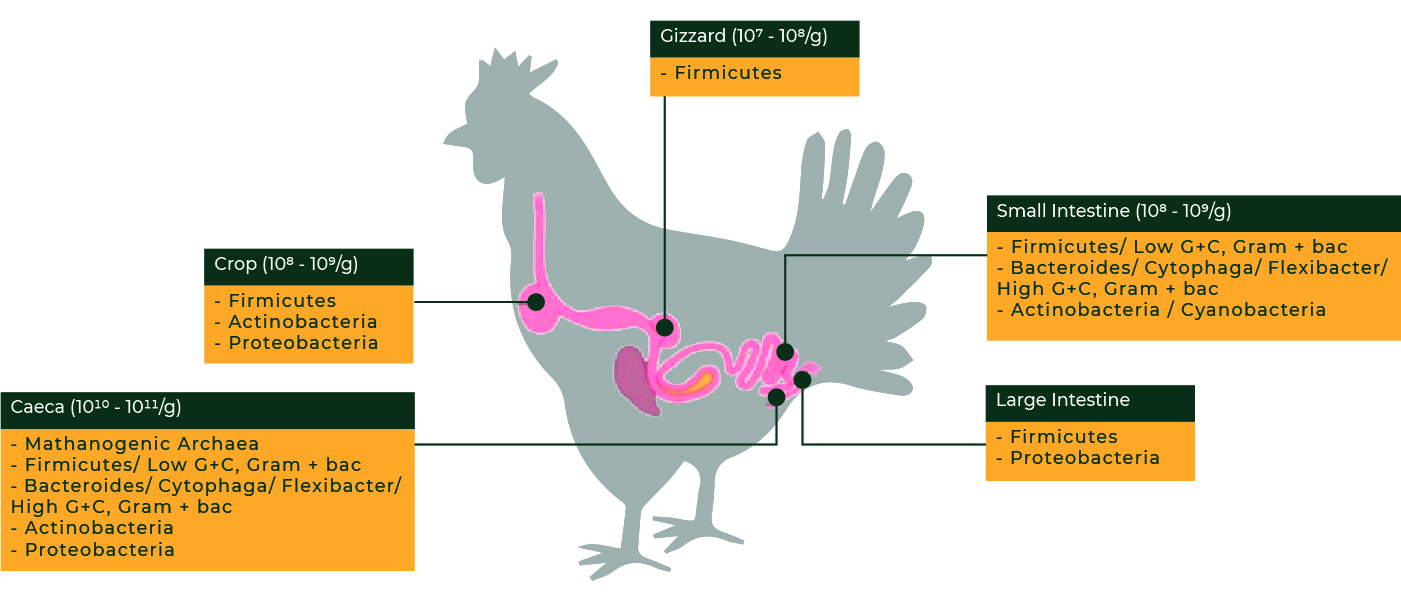
HOW THE NUTRITIONAL SYSTEM WORKS
SWINE
Once food is chewed and mixed with saliva, it passes through the mouth, pharynx, and then esophagus to the stomach. The stomach is a muscular organ responsible for storage, which initiates the breakdown of nutrients and passes the digesta to the small intestine. The stomach has four distinct areas that include the esophageal, cardiac, fundic, and pyloric regions. The esophageal region is located at the entrance of the stomach from the esophagus.
EFFECT OF FUNCTIONAL INGREDIENTS
Select the effect point
HOW THE NUTRITIONAL SYSTEM WORKS
AGRICULTURE
Agriculture is the way of producing food and today it is in full evolution to adapt to various practices that favor world production. The impact given by this is very important since it depends on it whether fruit is in the optimal conditions for consumption. In case the appropriate cultivation and harvesting processes have not been implemented, deficiencies in micro/macronutrients that the fruit should naturally possess can be generated, in this way the Physico-chemical characteristics play an important role in the acceptability of products.
